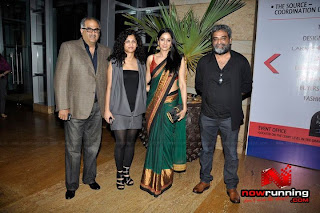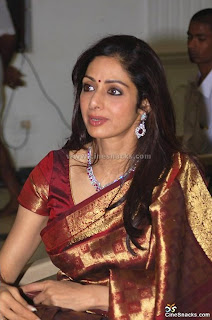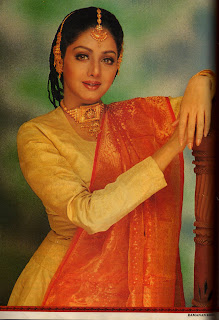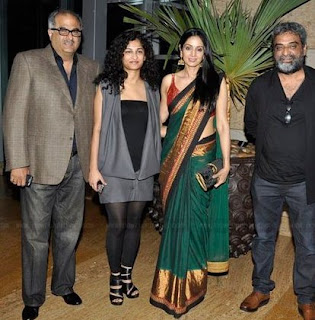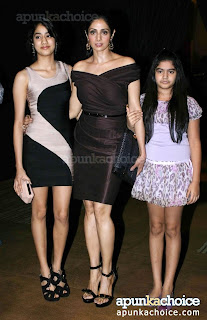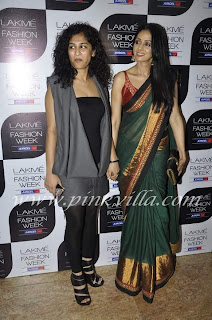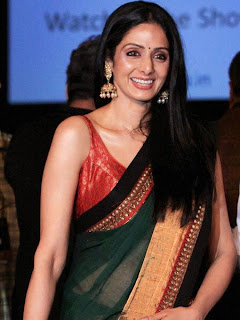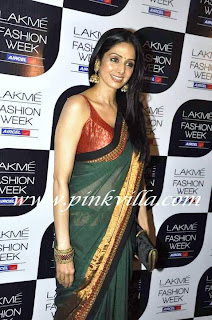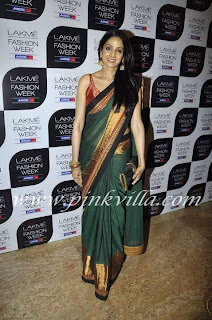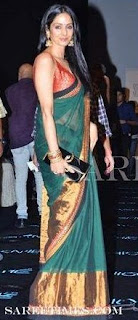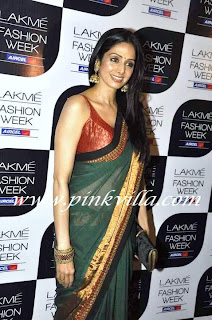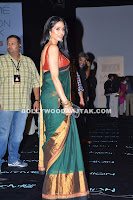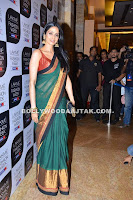Buzz, that most fickle of beasts, has started to surround
English Vinglish even before its release date is set.
For film buffs, Gauri Shinde's debut feature marks the long-awaited return of Sridevi, after a hiatus of nearly a decade-and-a-half. But it's the unusual line-up of producers that's piqued the curiosity of even those not interested in actors and their comebacks.
In investment circles, the big news is that of Rakesh Jhunjhunwala and Radhakrishnan Damani dabbling in a Bollywood production, for the first time. English Vinglish also sees another debutant producer in R Balakrishnan (Balki). As chairman of Lowe Lintas, Balki is admired and envied by peers in advertising for being the only person to successfully manage two incredibly complex vocations: creative head of one of India's biggest agencies and a Bollywood director with two films to his credit.
Rounding out the list of producers is Gary S of Red Ice Films, a close professional associate of Shinde.
This unusual ensemble was put together to create a film that remains as true to script as possible. As soon as he read his wife Gauri Shinde's story, Balki was very impressed and just a little envious. After briefly exploring a few options, the couple decided to make the film under their own banner — Hope Productions.
Shinde says, "There were others interested but we decided to have control of it so there wouldn't be creative interference." Being a producer was something that had never occurred to Balki.
He says, "It was a trilingual film and various people had different points of view on the economics and viability. That's when I got into the picture."
His misgivings about producing led him to bring in Gary S from Red Ice. In the course of looking for other co-producers, he recalled a brief conversation with ace investor Rakesh Jhunjhunwala: "He'd given me his card saying that at some point, we should do something together."
Balki contacted Jhujhunwala and gave him a short brief: the only part of which he's willing to share at the moment is that "it's about the simple insecurities of a woman."
Within 24 hours, both Jhunjhunwala and Radhakrishnan Damani were in. It turns out Jhunjhunwala had wanted to be associated with film production but was waiting for something slightly more sensitive than typical Bollywood masala fare.
Balki says, "He has not interfered one bit. It's the first time a financier and co-producer add the weight to a project that he does."
Another option was Boney Kapoor, the husband of Sridevi and one of Bollywood's leading independent producers.
However, according to Balki, "I just believed it would be better as a relaunch for Sridevi without Boney. He's a great producer and I sometimes wish I'd said yes! But it just needed a kind of neutrality."
The producers are not willing to comment on the budget, with one leg of filming yet to be completed. For Shinde, a feature is something she always wanted to do — through her stint in advertising and in her later career as an ad filmmaker. She did a filmmaking course in New York while still in Lowe Lintas before moving out of the agency to direct TV commercials.
Oh Man!, a short film by her, was screened at the Berlin Film Festival. She worked with ad production houses like MAD, Abhinay Deo Productions and Red Ice on brands like Tanishq, Havells and Axis Bank.

She's good naturedly indignant about Balki who had significantly less experience behind the camera beating her to the punch in making a feature.
She says "He's more disciplined. I'm far more lazy and a procrastinator. But I also didn't want to make a film until I had something worth spending two years on." She worked on the script of English Vinglish for a couple of years, even as she continued to make ad films and finally began production in January this year.
She refuses to be drawn into a discussion of what the film is about, only saying, "It's a light-hearted film about a woman, her journey, and coming into her own. I don't want it to be looked at as a woman filmmaker with a woman-centric film; it's not arty or sad."
With the India schedule complete, all that remains is the part that's to be filmed in New York. Her experience as an ad filmmaker has helped. She says, "A 30-second commercial gets shot in one day versus five scenes for a feature in a day. In terms of quality and people, the kind of professionalism in advertising is great."
With shoots happening as often as three or four times a month, it helps keep any budding director in touch with the filmmaking process. Shinde has carried over many members of the team she works with: the director of photography Lakshman Utekar as well as an art director/production designer.
And while she's yet to encounter this firsthand, she believes people with an advertising background face a greater pressure to perform within Bollywood. While many of the films they've made have been critically acclaimed, relatively few of them have set the box office ablaze.
She says ruefully, "If my film doesn't do well I'll be slotted as an ad filmmaker who can't make feature films."
Many people in advertising — particularly those who are yet to actually venture into full length filmmaking - labour under the illusion that a feature is a lot more liberating than a commercial can ever be. Shinde does not count herself among this lot.
She says, "I don't look at that as 'not so great' and this as very free, since I love doing ads as well." The difference is that in a feature, a director can insist on at least 50% to 60% of her vision but she admits, "I don't know how it will pan out when it comes to promotion and distribution."
Having a filmmaker as a spouse, and in the case of Shinde, a producer, is a bit of a mixed bag. She was on the sets of both Balki's films, more so in the case of Paa but says, "I was there to criticise and point out things that didn't work for me. He does the same."
While Balki helped get the finances and rope in Sridevi, he prefers to be a hands-off producer .
The couple avoid being on the sets at the same time. Balki says wryly, "My involvement is more in terms of moral support. Can a producer exhibit the sensitivity that the director needs? Can I save her from the insensitivity of production? According to her I haven't done that."
Among the ground rules laid down is that only one of the two can actually be making a film. Shinde says, "We'd need to live in two separate houses if we were doing films simultaneously! You need the other person to be a spouse, to bounce off ideas and things like that. For which, the other person has to be far less stressed."
As for Hope Productions, neither of them knows what the future holds. It will be the banner for Balki's next film which stars Amitabh Bachchan. He intends scripting it shortly and to be co-producer :
"I want to have the intellectual property rights and creative control of the project." The only thing he's sure of is that Hope is not going to become a regular production house, churning out films and that he hasn't "turned producer" .
Ravi Balakrishnan,
ET Bureau Aug 27, 2011,
08.16am IST
 Sridevi, "I never hassled Yashji during the making of Lamhe. That was one film which I really loved doing. The only reason why we have not worked together again is because after doing two beautiful films like Chandni and Lamhe, we want to do something better. He told me that the day he has a spectacular script, he will definitely do a film with me."
Sridevi, "I never hassled Yashji during the making of Lamhe. That was one film which I really loved doing. The only reason why we have not worked together again is because after doing two beautiful films like Chandni and Lamhe, we want to do something better. He told me that the day he has a spectacular script, he will definitely do a film with me."


